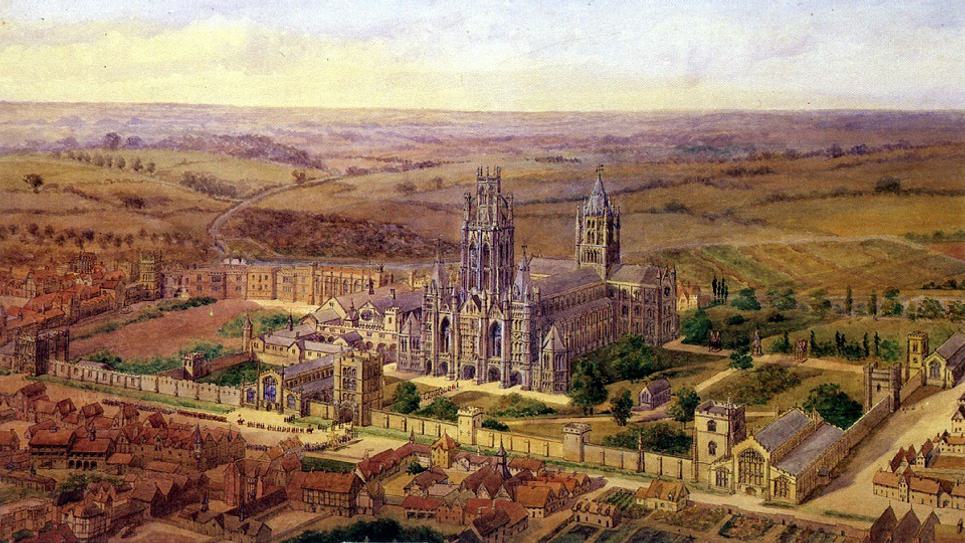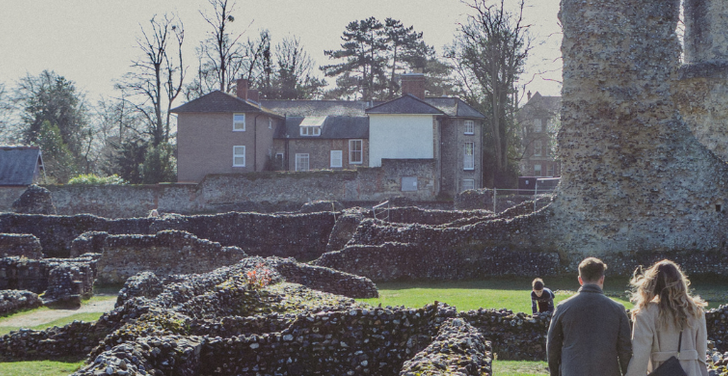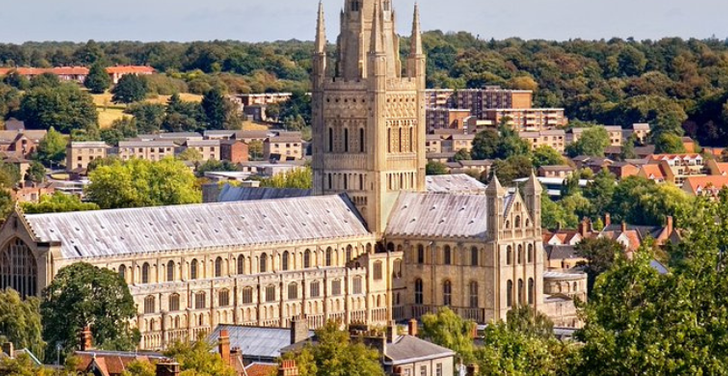
Back to Blogs
Discover
10 Things About Bury St Edmunds
Discover some lesser known facts about Bury St Edmunds that you may find surprising...
1. A Bury St Edmunds Lawyer founded Jamestown

Jamestown in Virginia, USA, was founded by Bury St Edmunds explorer and lawyer Bartholomew Gosnold, the first permanent English settlement in America. His legacy led him to become one of the world's most renowned travellers.
Visitors to Bury St Edmunds can see a permanent reminder of Gosnold’s adventures in the Refectory garden of St Edmundsbury Cathedral. A beautifully modern piece of art which depicts Gosnold’s ship, the Godspeed, by artist Jonathan Clarke.
2. The single largest Witch Trial was held in Bury St Edmunds

When the Great Witch Craze between 1599 and 1694 swept through Europe and the European colonies in America the history of Bury St Edmunds took a very dark turn and the largest single witch trial in England was held in Bury St Edmunds. Find out more about witchcraft at Moyse's Hall Museum.
3. The Town has a Starring Role in a Dickens Novel

Bury St Edmunds and town's former coaching inn now hotel The Angel feature extensively in Charles Dickens' The Pickwick Papers. Dickens stayed at The Angel three times, first as a journalist in 1835, and then returned as a famous author in 1859 and 1861 to read to a captive audience at the next door Athenaeum.
His favourite room, 215, is now known as the Charles Dickens room, and still contains the original four-poster bed he slept in!
4. A French Queen is buried in the town

St Mary’s Church in Bury St Edmunds is the final resting place of Mary Tudor, Queen of France, Duchess of Suffolk and favourite sister of Henry VIII (after whom the Mary Rose was named).
5. Peter Pan's Roots Can Be Found in Nearby West Stow

In the mid-1890s, Peter Pan author J. M. Barrie is said to have visited the West Stow school house, just yards away from the West Stow Pods glamping site.
Local people say he was visiting a headmistress he was acquainted with at the school and came upon the twisted roots of a Scots pine while walking through the woods. The tree’s magic is said to have inspired an illustration in the first edition of Peter Pan!
6. A Road Sign on the Town's Angel Hill is thought to be a First

The 'Pillar of Salt' sign on Angel Hill in Bury St Edmunds was put up in 1935 and is thought to be the first internally illuminated road sign in the country.
7. Hidden within the town's Atheneaum is a Victorian Astronomical Observatory

Tucked away within the green dome on top of The Athenaeum is one of only two astronomical observatories in Suffolk complete with a Victorian Troughton & Simms 4-inch refracting telescope.
The observatory was built after an inspiring astronomy lecture at The Athenauem by Sir James Airy, 7th Astronomer Royal, in October 1858, at the same time the impressive Donati’s comet was looming large in the night sky.
Unfortunately the observatory is not currently open to the public as it is in need of restoration but The Athenaeum Astronomy Association has started fundraising to restore the observatory to its former glory.
8. The town is thought to have the earliest example of a sundial

This Victorian drinking fountain, with sundial cube on the top, now a planter in the Abbey Gardens was gifted to the people of Bury St Edmunds in 1871 by the 3rd Marquess of Bristol and was originally outside The Nutshell pub in the Traverse.
The sundial is an extremely early example - quite possibly the earliest in the country - of a sundial that allowed the town clocks to be set to GMT rather than the local mean time.
9. Bury St Edmunds has its own rose.

The Saint Edmund Rose was created in commemoration of the completion of St Edmundsbury Cathedral's Millennium Tower and planted in the Abbey Gardens Rose Garden by HRH Charles, Prince of Wales and Camilla, Duchess of Cornwall in 2005.
10. The Abbey of St Edmund would have towered over Bury St Edmunds had it not been destroyed

The magnificent St Edmundsbury Cathedral's Millennium Tower is 160ft tall and you can discover magnificent views over the town from the top.
But did you know that had it not been destroyed the Abbey of St Edmund would have stood at least twice as tall! You can see the remains of the abbey in the Abbey Gardens today.
Latest news

News
Bury's Best By Bike Rides Back This Summer in Bury St Edmunds
A ride around the town’s iconic historic sights in the town centre by PedalCab is back for summer 2025!

News
UnLondon in Bury St Edmunds
Escape the rat race and hop on board with Greater Anglia to historic Bury St Edmunds...

News
Bury St Edmunds Parks Awarded Green Flag Status
The stunning Abbey Gardens and Nowton Park have both been awarded national Green Flag Status.

News
Days Out You Can Enjoy From Bury St Edmunds
There’s even more to explore on Bury St Edmunds’ doorstep, from historic towns, shopping, art and architecture, to breathtaking countryside views and of course, the nearby coastline. These…

News
We're working on our next competition - come back soon!

News
60 Things To Do This Summer in Bury St Edmunds
Here's our pick of 60 things to do this summer in Bury St Edmunds and Beyond!

News
Biggest and Boldest Literature Festival in Bury St Edmunds This October
The four day programme of author events, creative writing workshops, walks and film screenings comes to Bury St Edmunds in October!

News
Bury St Edmunds in Top 15 Foodie Destinations in Britain
Suffolk's foodie capital Bury St Edmunds makes top 15 foodie town destinations!

News
Celebrating 20 Years of the Cathedral Millennium Tower
Disocver the events planned to mark the 20th anniversary of the completion of St Edmundsbury Cathedral's 150ft Millennium Tower!
